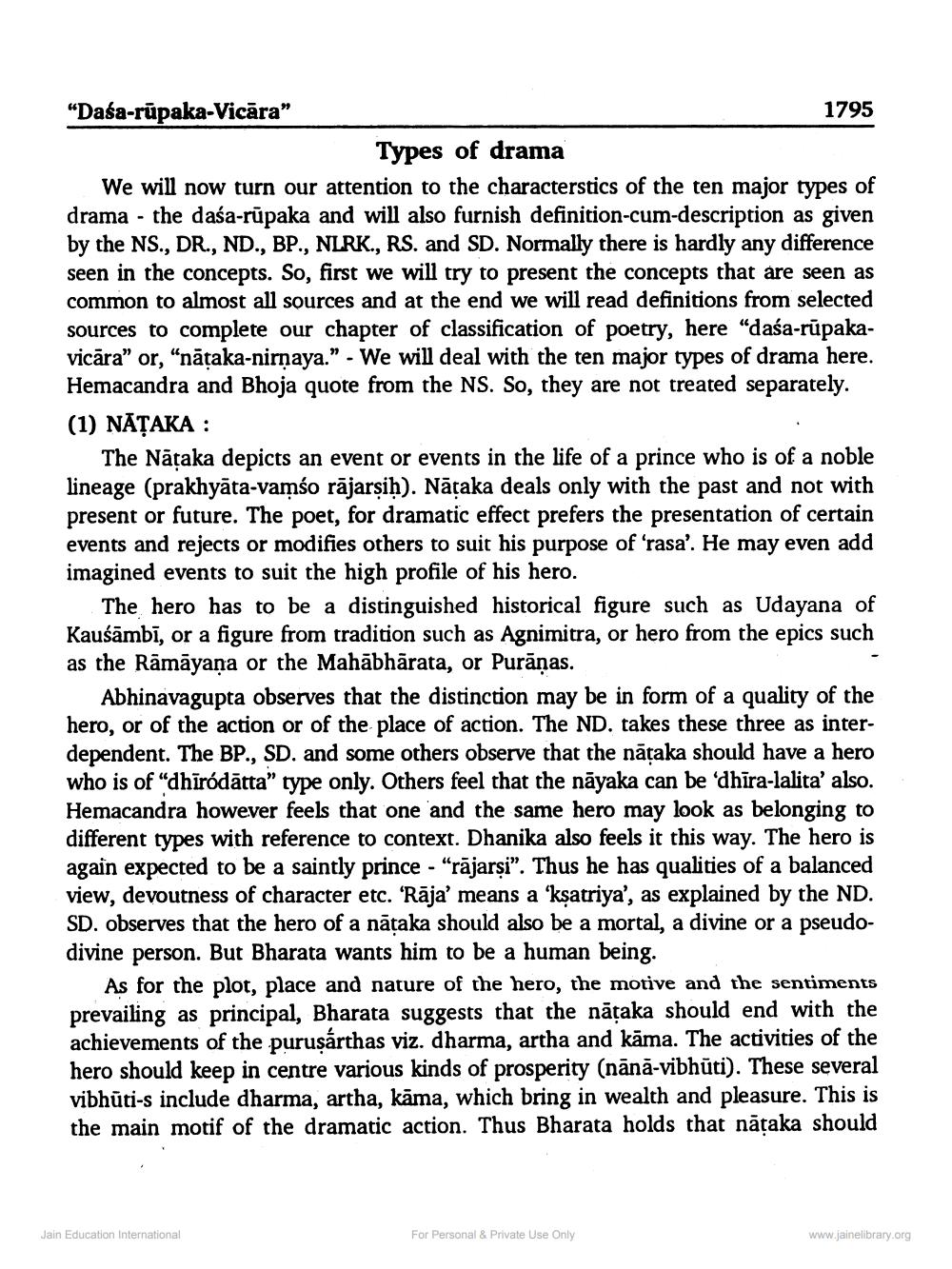________________
"Daśa-rupaka-Vicāra"
1795
Types of drama We will now turn our attention to the characterstics of the ten major types of drama - the daśa-rūpaka and will also furnish definition-cum-description as given by the NS., DR., ND., BP., NLRK., RS. and SD. Normally there is hardly any difference seen in the concepts. So, first we will try to present the concepts that are seen as common to almost all sources and at the end we will read definitions from selected sources to complete our chapter of classification of poetry, here "daśa-rūpakavicăra" or "nätaka-nirnava." . We will deal with the ten major types of drama here. Hemacandra and Bhoja quote from the NS. So, they are not treated separately. (1) NĀȚAKA :
The Nāțaka depicts an event or events in the life of a prince who is of a noble lineage (prakhyāta-vamso rājarșih). Nāțaka deals only with the past and not with present or future. The poet, for dramatic effect prefers the presentation of certain events and rejects or modifies others to suit his purpose of 'rasa'. He may even add imagined events to suit the high profile of his hero.
The hero has to be a distinguished historical figure such as Udayana of Kauśāmbi, or a figure from tradition such as Agnimitra, or hero from the epics such as the Rāmāyana or the Mahābhārata, or Purānas.
Abhinavagupta observes that the distinction may be in form of a quality of the hero, or of the action or of the place of action. The ND. takes these three as interdependent. The BP., SD. and some others observe that the nataka should have a hero who is of "dhīródātta" type only. Others feel that the nāyaka can be dhīra-lalita' also. Hemacandra however feels that one and the same hero may look as belonging to different types with reference to context. Dhanika also feels it this way. The hero is again expected to be a saintly prince - "rājarși”. Thus he has qualities of a balanced view, devoutness of character etc. 'Rāja' means a ‘ksatriya', as explained by the ND. SD. observes that the hero of a nātaka should also be a mortal, a divine or a pseudodivine person. But Bharata wants him to be a human being.
As for the plot, place and nature of the hero, the motive and the sentiments prevailing as principal, Bharata suggests that the nātaka should end with the achievements of the purusárthas viz. dharma, artha and kāma. The activities of the hero should keep in centre various kinds of prosperity (nānā-vibhūti). These several vibhūti-s include dharma, artha, kama, which bring in wealth and pleasure. This is the main motif of the dramatic action. Thus Bharata holds that nātaka should
Jain Education International
For Personal & Private Use Only
www.jainelibrary.org




